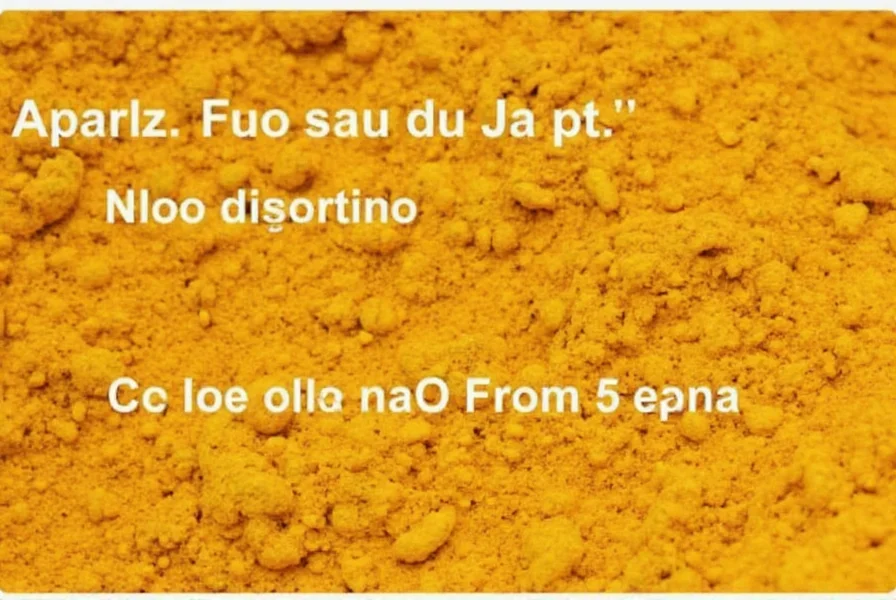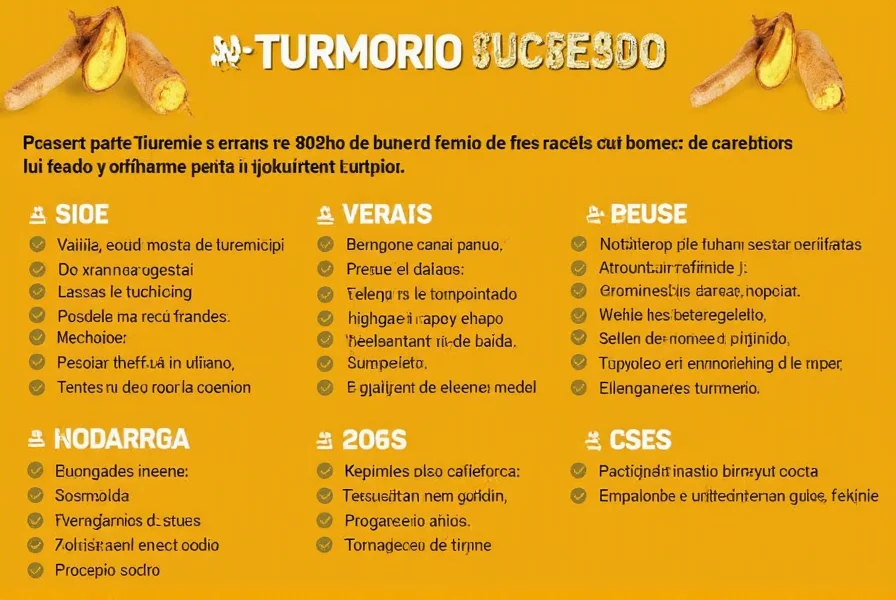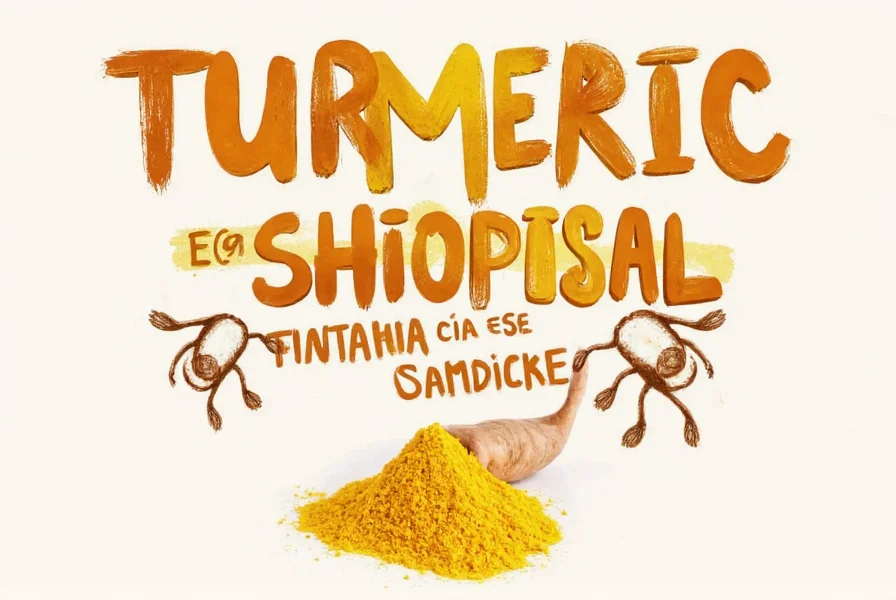When searching for turmeric in Spanish contexts, understanding the correct terminology helps avoid confusion with similar spices. While 'cúrcuma' is universally recognized throughout the Spanish-speaking world, some regions might use descriptive phrases like 'azafrán de la India' (Indian saffron) due to its similar color, though this is technically incorrect as turmeric and saffron are distinct spices.
Understanding Turmeric Terminology in Spanish
The term 'cúrcuma' comes directly from the Latin 'curcuma,' which itself derives from the Arabic 'kurkum.' Unlike many ingredients that receive completely different names across languages, turmeric maintains recognizable linguistic roots in Spanish. This consistency makes it relatively straightforward for language learners seeking the Spanish translation for turmeric.
| English Term | Spanish Translation | Common Usage Context |
|---|---|---|
| Turmeric root | Raíz de cúrcuma | Fresh turmeric in markets |
| Turmeric powder | Cúrcuma en polvo | Spice aisle purchases |
| Ground turmeric | Cúrcuma molida | Cooking instructions |
| Turmeric supplement | Suplemento de cúrcuma | Health contexts |
Pronunciation Guide for Spanish Learners
Properly pronouncing 'cúrcuma' is essential for clear communication in Spanish-speaking environments. The word follows standard Spanish pronunciation rules:
- cú - sounds like 'koo' (with stress on this syllable)
- rcu - the 'r' is lightly rolled, 'cu' sounds like 'koo'
- ma - sounds like 'mah'
Many English speakers searching for how to say turmeric in Spanish mistakenly pronounce it with a hard 'c' sound like in English, but in Spanish, the 'c' before 'u' always makes a 'k' sound. The stress falls on the second syllable, distinguishing it from similar words.

Regional Variations Across Spanish-Speaking Countries
While 'cúrcuma' remains the standard term, some regional variations exist:
- In parts of Mexico and Central America, you might hear 'añil' though this technically refers to a different plant
- Some Caribbean regions use 'cúcuma' with a slightly softer pronunciation
- In certain South American markets, vendors might describe it as 'la especia amarilla' (the yellow spice) when customers seem confused
These regional differences are important to recognize when traveling or communicating with Spanish speakers from various backgrounds. Understanding these nuances helps prevent confusion when discussing turmeric in Spanish recipes or purchasing the spice in local markets.
Common Misconceptions to Avoid
One frequent error among language learners is confusing turmeric with saffron. While both produce yellow coloring:
- Cúrcuma = turmeric (more affordable, earthy flavor)
- Azafrán = saffron (significantly more expensive, floral flavor)
When asking what is turmeric called in Spanish, be specific to avoid accidentally purchasing saffron, which costs substantially more. In some regions, unscrupulous vendors might substitute turmeric for saffron due to similar coloration, so knowing the precise terminology protects consumers.
Practical Usage in Spanish-Speaking Cultures
Turmeric has gained popularity in Spanish-speaking countries primarily for its health benefits, though traditional usage varies:
- In Spain, it's increasingly used in rice dishes as a more affordable alternative to saffron
- Latin American countries incorporate it into traditional healing practices
- Mexican cuisine sometimes uses it in mole preparations
- Many Hispanic households now include 'cúrcuma' in daily wellness routines
When discussing turmeric translation Spanish in culinary contexts, you'll often hear phrases like 'agrega un poco de cúrcuma para dar color' (add a little turmeric for color) or 'la cúrcuma tiene propiedades antiinflamatorias' (turmeric has anti-inflammatory properties).

Shopping for Turmeric in Spanish-Speaking Regions
When purchasing turmeric in Spanish-speaking countries, these phrases will prove helpful:
- ¿Dónde puedo encontrar cúrcuma? (Where can I find turmeric?)
- Quisiera comprar cúrcuma en polvo, por favor. (I would like to buy turmeric powder, please.)
- ¿Es esta cúrcuma orgánica? (Is this organic turmeric?)
- ¿Cuál es el precio de la cúrcuma? (What is the price of turmeric?)
Understanding these practical applications of the Spanish word for turmeric spice ensures successful communication whether you're cooking, shopping, or discussing health benefits with Spanish speakers.
Is cúrcuma the same as azafrán in Spanish?
No, cúrcuma (turmeric) and azafrán (saffron) are completely different spices. While both produce yellow coloring in food, they come from different plants, have distinct flavors, and vary significantly in price. Turmeric is much more affordable than saffron.
How do you pronounce cúrcuma correctly in Spanish?
Cúrcuma is pronounced koor-KOO-mah, with the stress on the second syllable. The 'c' makes a 'k' sound, and the 'u' is pronounced like 'oo' in 'moon'. The final 'a' sounds like 'ah'.
Do all Spanish-speaking countries use the same word for turmeric?
Yes, 'cúrcuma' is the standard term used throughout the Spanish-speaking world. While minor pronunciation variations exist between regions, the spelling and basic pronunciation remain consistent across countries.
Can I use cúrcuma instead of azafrán in Spanish recipes?
Yes, cúrcuma can substitute for azafrán (saffron) in many recipes to provide yellow color, but the flavor profile differs significantly. Turmeric has an earthier taste compared to saffron's floral notes. Use approximately 1/4 teaspoon of turmeric for each pinch of saffron required.
What's the difference between 'cúrcuma' and 'cúcuma'?
'Cúrcuma' is the correct spelling in Spanish. 'Cúcuma' is a common misspelling that occurs when people drop the 'r', but this changes the pronunciation and isn't standard. Always use 'cúrcuma' for proper communication.
Conclusion
Understanding that turmeric in Spanish is consistently called 'cúrcuma' across most regions simplifies communication for travelers, language learners, and culinary enthusiasts. By mastering the correct pronunciation and recognizing regional usage patterns, you can confidently discuss, purchase, and use this valuable spice throughout the Spanish-speaking world. Whether you're exploring traditional recipes or discussing health benefits, knowing the precise terminology ensures accurate communication and prevents common misunderstandings with similar spices like saffron.











 浙公网安备
33010002000092号
浙公网安备
33010002000092号 浙B2-20120091-4
浙B2-20120091-4